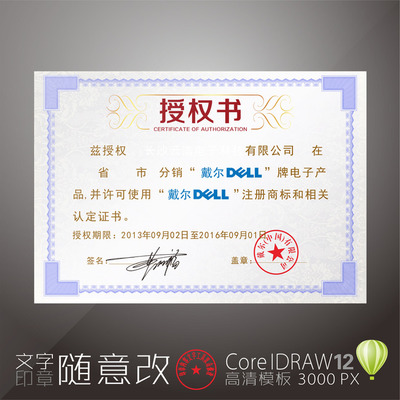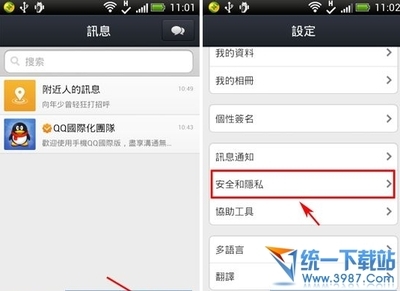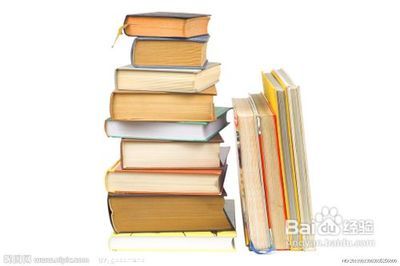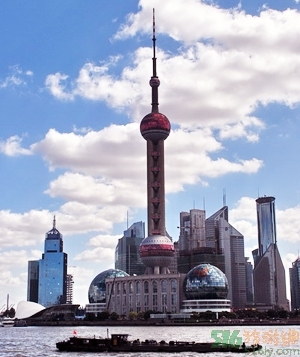Confucius[kən’fu∫jəs 孔子]temple[templ寺庙 ] & the Qinhuairiverscenic[si:nik风光] area[εə riə 地带]
孔庙和秦淮河风光带
1:The Confucius temple, located [lou’keitid位于]at theQinhuai River scenic[si:nik风景的] area,
孔庙位于秦淮河风光带
2:is a well-known tourist[tu:rist旅游者 ]resort[ri’zэ:t常去度假的地方 ] of the ancient capitalNanjing .
她是古都南京闻名的旅游度假地。
3the river banks of Qinhuai are known for Confucius Temple
秦淮河因孔庙而闻名。
4and jointly[ d3эintli连带地] called the Confucius templearea.
因此也叫夫子庙地区。
5the Confucius temple is no doubt[ daut 怀疑] the mostfamous.
孔庙无疑是最著名的
6The temple is the place for people to pay worship[wə:∫ip崇拜] to Confucius.
庙是供人们崇拜孔子的地方
7:The Confucius temple here in Nanjing was first built in1034
孔庙在南京第一次建于1034。
8and rebuilt[ri:blt重建] in 1986
重建于1986年
9The temple we often mentioned[men∫ən提出] shouldinclude[inklu:d包括] three architectural[a:kitekt∫ərə建筑]complexes[kэmpleks群,综合体]:
我们常提的孔庙应该包括三个建筑群:
10the temple of Confucius with the hall of greatachievements[ə’t∫i:vmənt大成] as the main[mein主要的]body,
孔庙及主体建筑大成殿
11the palace[pælis宫殿] of learning and theimperial[impiəriəl帝国] examination[igzæmi’nei∫ən考试]center.
学宫和国家考试中心。
12As early as in 337 A.D.[ei’di:公元],
早在公元337年
13but at that time there was only the palace[pælis宫殿] oflearning without the Confucius temple.
那时仅有学宫,没有孔庙。
14The temple was built up and extended[ikstendid扩大] on thebasis [beisis基础]of the palace of learning until 1034.
直到1034年孔庙才在学宫的基础上建立和扩大起来
15The Confucius temple complex[kэmpleks 复杂] covers [kΛvə包括]the pan[pæn畔] pool[pu:l池],screen[skri:n屏,照壁]wall,the gateway[geitwei通道] of allscholars[skэlə学生,有文化],
孔庙综合包括:泮池、照壁、天下文枢坊、
16juxing[聚星] pavilion[pə’viljən亭],Kuixing[魁星]pavilion, Lingxing[灵星 ]gate,
聚星亭、魁星亭、棂星门。
17the hall of great achievements[ə‘t∫i:vmənt 达成] andthe gate etc[ =et cetera等等et’setərə ].
大成殿和大成门等等。
18As the confucius temple in qufu,Shandong province
在山东省曲阜的孔庙
19is built by the side of the pan river,
是建在泮水之滨的
20all the temples of Confucius in the country
所有全国的孔庙
21are built at the riverside
都建在河边
22and the water in front of Confucius temple is called panpool.
孔庙前面的水叫泮池。
23And this has become a custom[kΛst∂m惯例]through[θru:在期间] long usage[ju:sidЗ惯用法]
这形成了长期的惯例。
24this confucirs temple makes the natural stream[stri:m流动]of the Qinhuai river as its pan pool,
这里的夫子庙把秦淮河流动的水作为它的泮池
25which is also called the pool of crescent[kresnt新月] moon“by the local[louk∂l当地] people.
当地的人们把它叫着月牙池
26Standing at the southern bank of the pan pool is thescreen[skri:n屏] wall,
泮池南边站立的是照壁
27which is 110 meters long and 10 meters high.
它110米长,10米高
28it ranks[ræηk最高点] top among all the screen wallsacross[∂’krэ:s遍布各地] the county.
它位于全国所有照壁之冠
29The wall was built in 1575 and newly renovated[‘ren∂,veit重做]in 1984 .
这个照壁建于1575年,近来重建于1984年
30the function [fΛηk∫n功能]of the wall
照壁的功能
31was to indicate[indikeit表明] that the confucirs’ learningwas too profound[pr∂faund渊博] to be understood bycommon[kэm∂n普通] folks.[fouk民众]
是表明孔子渊博的学问被普通百姓所接受
32Another function was to cover up遮挡 the mainbuilding of the temple,
另一功能是遮挡住寺庙的主体建筑
33so as to以便 give people an impression.[impre∫∂n印象]of its grandeur[’græn dЗ∂辉煌] andmagnificence[mæg’nifisns庄严]
以便给人们一个它辉煌而庄严的印象
34The gateway[geitwei入口处] of all scholars[skэl∂学者]was first built in 1586 in an imitation[imitei∫∂n仿制] ofthat in Qufu.
天下文枢坊始建于1586年仿曲阜天下文枢坊,
35The meaning of the structure[strΛk t∫∂]was to refer[rif∂:归于] to Confucius as the hub[hΛb中心]of all writings and ethics[eθiks道德] in ancient times.
它结构的意思是所有文章和道德的中心都归于孔子。
36lingxing gate is also called the gate ofetiquette[eti’ket礼仪]
棂星门又叫礼仪门
37specially built for emperors[emp∂r∂皇帝] tooffer[э:f∂提供] sacrifice[sækrifais祭祀] to Confucius.
它是专为皇帝祭祀孔子而建的
38the gate built in front of confucius temple
它建于孔庙前
39implies[implai暗指] the meaning of
它的寓意是
40“people of talent[tæl∂nt天才] comingforth[fэ:θ涌现] in large numbers[nΛmb∂大量]
大量人才涌现
41and stability[st∂‘biliti稳定] of the country.”
国家稳定
42Dacheng gate or the gate of greatachievements[∂t∫ivm∂nt达成]
大成门或集大成的门,
43is also called halberd[hæb∂d戟] gate,
又叫戟门
44which is the front door of the Confucius temple.
它是孔庙的前门
45As Confucius epitomized[ipit∂maiz作为缩影] Chineseculture,
作为中国文化的宿影的孔子
46he was posthumously[pэstjum∂死后]granted[gra:ntid假定] the title[taitl称号] of supersaint[seint圣徒] Confucius.
他死后被授予至圣先师的称号
47In the entrance[entr∂ns入口] hall[门厅] of the gatethere are four old stone tablets [tæblit碑]:
在大门的入口门厅有四块古石碑
48The tablets of Confucius asking laozi of theethical[eθiks道德] codes[koud经].[孔子问礼图碑]
一是孔子请教老子道德经的图碑
49It was made in 484 A.D. during the southern dynasty
它是刻于南朝公元484年
50recorded[rekэ:d记录] on the tablet is thepersonal[p∂s∂nl个人] experience[ikspi∂ri∂ns经验] ofConfucius on his visit to Luoyang,
碑上记录的是孔子去洛阳访问的经验
51the capital of the eastern zhou dynasty in 518 B.C.
在公元前518年东周王朝首都
52where Confucius madeinvestigations[investingei∫∂n研究] on the system ofinstitutions[institju:∫∂n制度] of the zhou
孔子研究了周王朝制度
53and went in quest[kwest寻找] of the ways of how toprosper[prэsp∂繁荣] andstabilize[steibilaiz稳定] the country
去寻找了如何繁荣和稳定国家的方法
54and of how to consolidate[k∂nsэlideit联合] the power ofslave[sleiv奴隶] owners[oun∂主人] in the lustate[steit国家].
如何在鲁国联合奴隶主的力量
55The tablet of jiqing Confucius temple.
[集庆孔庙碑]
56In 1308 when the yuan dynasty reigned[rein统治] over thecountry,
1308年,元朝统治全国
57emperor wuzong issued[i∫iu发布] animperial[impi∂ri∂l帝国] edict[i:dikt布告]
武宗皇帝发布了圣旨
58”take education as the stateadministration[∂dministre∫∂n管理] of theempire[empai∂皇权]”
以兴学作士为王政
59In the next fall when the Confucius temple started to berebuilt ,
第二年孔庙开始被重建
60lu zhi wrote an inscription[inskrip∫∂n碑文] for thetablet.
卢挚为碑撰写了碑文
61but the tablet was not made right away until 22 years later in1330.
当时没有勒石,直到22年后在1330年
62In the xianfeng years of the qing dynasty,the Confucius templewas burnt down in a war
清朝咸丰年,在战争中被毁,
63and the tablet was missing[misiη失踪]
此碑失踪。.
64during the reconstruction[ri:k∂nstrΛkl∂n重建] of theConfucius temple in 1986, the tablethappened[偶然发生] to be unearthed[Λn’∂:θ发掘] fromthe underground[地下]
1986年复建文庙时碑在地下被发现
65The tablet of the four saints[封四圣碑]
66In 1331 emperor wenzong of the yuan dynasty granted[gra:ntid加封]the four disciples[di’sai’pl门徒] ofConfucius
在1331年元朝文宗皇帝加封孔子的四个门徒
67Yanhui, zengshen, kongji and mengke as 4 saints[] second toConfucius
颜回、曾参、孔伋和孟轲为四亚圣
68and they were carved [ka:v雕刻]on a stone tablet to inform[infэ:m告知]the whole country.
以此刻在石碑上告知全国。
67tablet of madam super saint Confucius.[封至圣夫人碑]
 爱华网
爱华网